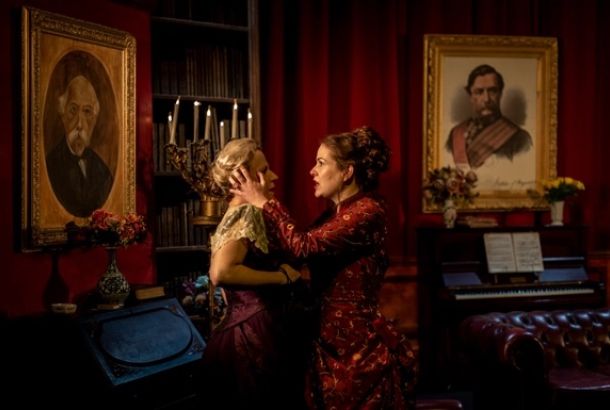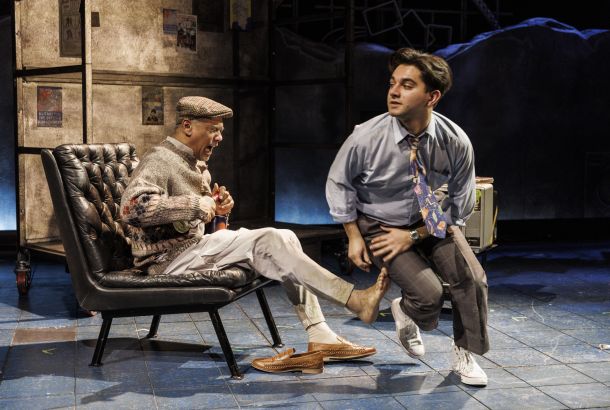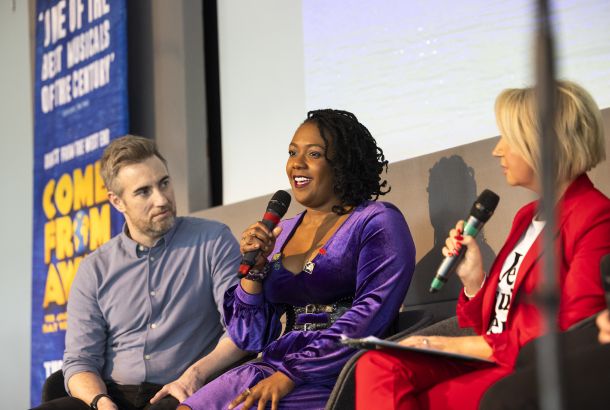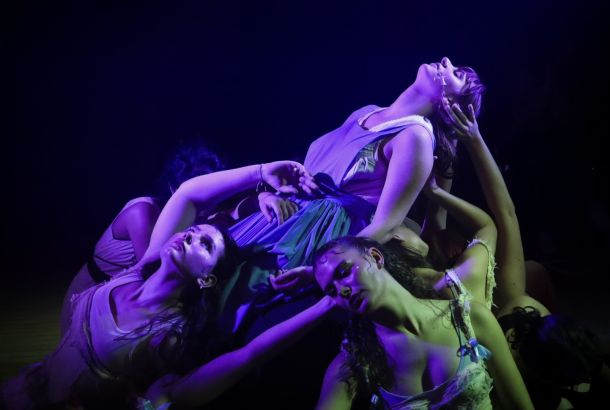The Nutcracker at the Royal Opera House: making ballet accessible
By aayushchadha

If I asked you to think about beauty, what’s the first thing that comes into your mind? What if I now asked you to think about harmony or grace?
I agree these are not things that we actively think about on a regular basis — instead, these are things that we just… feel. The sensations are produced almost spontaneously. We do not work out a series of steps to determine if something is beautiful; It just strikes us. Be it when we look at someone we love or at an attractive person walking down the street. Or when we happen to glance at a flower perched gently on a stem. Or even when we see a particularly ingenious display of human thought in, say, mathematical proofs, scientific discoveries, musical scores or even melodious sentences.
It’s incredibly hard to deny that nothing beautiful in this world exists when there are things that definitely produce a pleasurable sensation. These things might not be the same for you and me, but I think we can agree that they exist and would continue to exist even if we don’t perceive them (philosophers can pick a bone with this sentence later).
For centuries, questions about beauty and harmony have plagued thinkers of all kinds. Can we define beauty? Can we ascribe fixed properties to it? Are certain things more beautiful than others? Is beauty universal? Does harmony lead to beauty? The pursuit of answers to these questions has materialised in various forms of human endeavours — painting, music, mathematics, dance, and even sciences. And while it might be hard to perceive this universal ideal in fields completely unrelated to our own, ballet is one where even non-practitioners can vicariously experience this ideal in a single performance. And in a day and age like ours, where it seems like the world is burning with no hope in sight, ballet provides an escape that is not entirely fantastical but one that is often very much grounded in everyday experiences and feelings.
It reinvigorates and reminds, in the words of Guy de Maupassant, “It is us humans who have introduced a little grace, beauty, unknown charm and mystery into creation by singing about it, interpreting it, by admiring it as a poet, idealising it as an artist and by explaining it through science, doubtless making mistakes, but finding ingenious reasons, hidden grace and beauty, unknown charm and mystery in the various phenomena of Nature.”

At this point, one might say ballet is incredibly exclusionary. For one, you need to know an extensive terminology to fully appreciate it, the tickets tend to be exorbitantly priced, the performances are far too long, and all the attendees seem to snobbishly idolise “beauty and grace” in the name of purity and idealism while trampling on modern, supposedly more democratic forms of art without realising how they perpetuate the outdated imperial notions of ballet’s origins. To these criticisms, I would say it is understandable why you feel that way, but ballet has come a long, long way from being an elitist art form for the privileged segment of society. Especially here in England, the Royal Opera House has been at the forefront of the efforts to make ballet an inclusive, relatable and enjoyable art form for the masses.
To these criticisms, I would say I understand how you feel that way, but ballet has come a long long way from that, especially here in England. Thanks to the Royal Opera House and other companies, ballet has never been more welcoming or inclusive than it is today, not just materially in terms of ticket prices or venues but also in terms of accessible information that enables understanding.
The terminology, I agree, is very daunting, but you do not need to know what a series of jumps, for instance, is called, to appreciate its splendour and physical feat. For example, when Ronaldo leaps up high above the rest of the defenders when taking a header, do you really sit down and work out the physics of it to establish how that is an impressive feat? Much like that, if someone says the grand jeté (jump with split in the air) was incredible, just witnessing it should be convincing of its brilliance. And I daresay, it is much more impressive than Ronaldo doing a couple over the course of a match. After all, Ronaldo doesn’t really care how high he jumps or where his legs go when he is in the air or whether his jumps differ between corners, but for a ballerina or ballerino, the form and grace is of the utmost importance.
Putting all that together, doesn’t it just seem incredible that you get to witness such movements, repeatedly, combined with other equally complex yet beautiful movements done in perfect harmony with a musical score, with one flowing into the other and culminating in an exquisite crescendo?
There is no denying that to fully immerse oneself, ballet demands focus and concentration even of its viewers. In light of that, the long performances can seem taxing. But to this, I say, these days we are so taken by entertainment that titillates immediately that we are not willing to work a little harder for that delayed but far more gratifying reward that poetry or ballet has in store. Ballet can very well take you through a roller coaster of emotions between scenes, but only if you are paying attention. Our proclivities today are such that we rather stand on the shore and feel the water lap our toes rather than dive headfirst into the ocean and experience the waves of emotion (both pleasant and unpleasant). Sure, the latter requires swimming as compared to the former’s standing but it also inculcates a wider range of sensations by engaging our body and our eyes to the wonders of a different, colourful world entirely! Still not convinced? Take a moment to watch this short video clip and try to think of whom this might remind you.
The “art for snobs” claim is equally notwithstanding. Ballet’s audiences and casts now represent a wide intersection of various societal strata, its stories now involve elements of modern experiences as opposed to the narrow and sometimes insulting exoticism of its original storylines, and its splendour has burgeoned like never before with modern feats of engineering not only interspersed in the on-stage theatrics but also intricately woven into the narrative.
Having said that, the Royal Opera House’s Nutcracker felt a little uneven to me. Granted that it has some spectacular dancing, of individuals and of the corps, a musical score that people cannot stop raving about, and the most technically impressive staging I have ever seen, but despite all that, it felt that there were still kinks to be smoothed out.
I am fully aware that this could not actually be the case but just the result of my relative inexperience seeing ballets (Bolshoi’s Romeo and Juliet and the English National Ballet’s La Sylphide and Song of the Earth) or the vantage point of my seats — row D in the auditorium, which sort of gives a bird’s eye view but makes it hard to see individual expressions and skews impressions of symmetry. At times, it felt like the dancers were a bit off the mark in their synchronisation (especially the corps), which seemingly disrupted the illusion on stage.
The crowd’s impression seemed to confirm my views as well, with the loudest applause and shouts of approval being reserved for just one of the dances which incidentally wasn’t even the one performed by the principals (read senior most). Nonetheless, despite these criticisms, there is plenty to awe and dazzle, and it is certainly not a recommendation of skipping it altogether. Given the immense talent of the ballet company, this aberration is unlikely to last long. Moreover, the ballet holds other significance in form of a tradition that it upholds, and for that reason alone, it can be a wholly gratifying watch.

The story begins in the workshop of a certain Herr Drosselmeyer (played by Gary Avis), who is a magician and maker of mechanical contraptions, including one that pissed off the Queen of the Mice and caused her to trap his nephew in a Nutcracker Doll. As the curtains part, following on from Tchaikovsky’s overture, we see Drosselmeyer working in a little alcove in the centre of the stage. Through mime (another significant part of ballet), we learn about his trapped nephew and his idea to attend a party at the home of his friends, the Stahlbaums. As soon as the scene changes, the spectacle begins.
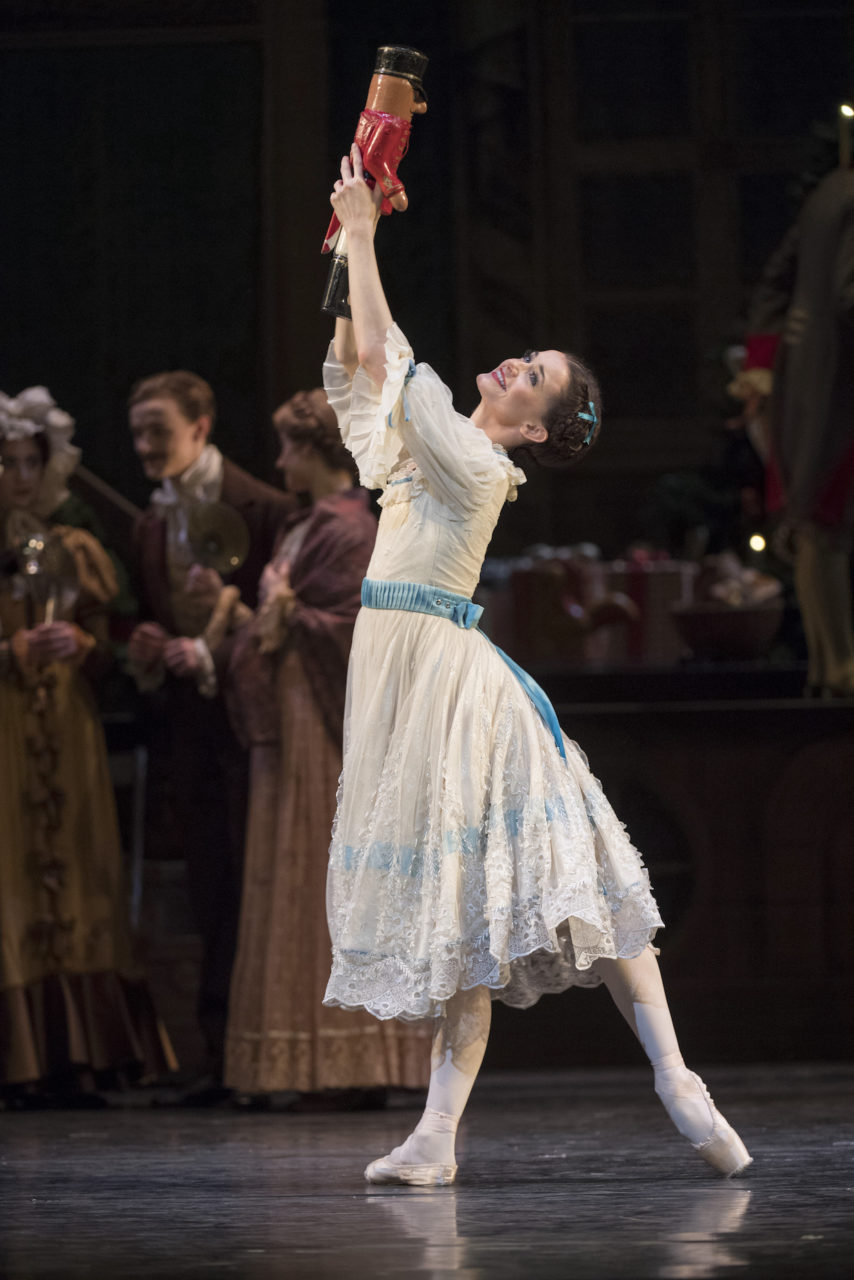
First of all, we realise that the alcove created in the stage is actually a really clever optical illusion using a screen that can display various images. The images are also ingeniously displayed in an array and give a sense of depth on what is essentially a two dimensional screen. The engineer in me was already in awe and absolutely did not anticipate these tricks — hats off to whoever conceived them!
We then see the screen disappear and find ourselves in the Stahlbaum’s living room which is geared for a Christmas party. You have children goofing around (it feels strange to say goofing around though when they do it so gracefully) and a Christmas tree flush with gifts. This is where we first meet Clara (Anna Rose O’Sullivan), the innocent child who has been picked to care for and love the Nutcracker doll to break the spell. From her first introduction, her costuming and delicate movements that standout from the rest of the party members showcase her prominence in the rest of the story.
But two other dancers make a mark here. The first is Liam Boswell, who plays Drosselmeyer’s assistant and brings extensive comedic relief to the scene. The second is Sasha Dobrynin-Lait, playing Fritz, Clara’s younger brother, who displays his dancing talent in a tiny segment where Clara and Fritz fight over the Nutcracker doll. The party scene otherwise feels quite slow and the act only picks up after it when Clara tries to search for the Nutcracker doll and finds herself drawn into Drosselmeyer’s special world.
We are treated to another technical feat here; almost like Alice in Wonderland, she finds herself to be much smaller than things around her and witnesses the tree grow to gigantic proportions. Soon enough, she is engrossed in a fight with the mouse king with a life-sized Nutcracker doll on her side. After a tense battle (toned down due to social distancing requirements of COVID), Clara and the Doll prevail, however, the Doll is significantly injured. Clara, in all her innocence, cares for it and, soon enough, her love and care prevails and the doll is freed of the curse. This ensues in one of the most sublime dances in the entire ballet, the Act 1 pas de deux between Clara and Hans Peter (Drosselmeyer’s nephew played by Joseph Sissens). I have put a video of this below (recorded with Marcelino Sambé) to showcase just how enthralling this looks.
After this triumph, they are whisked away to meet the Sugar Plum Fairy (principal artist Marianela Nuñez) and honoured by a wide assortment of dances. It’s amongst these dances, the crowd favourite Arabian Dance was performed by Melissa Hamilton and Lukas B. Brændsrød. Even at the distance I was sat at, I found myself feeling completely enchanted by the sharp and harmonious lines traced by Melissa Hamilton’s movement, completely in sync with a score that instantly transports one to the midst of an Arabian Nights story.
Unlike other ballets, where the principal ballerina/ballerino features in the story from start to finish, The Nutcracker reserves the appearance of its principals (Marianela Nuñez and Vadim Muntagirov) close to the end where they dance tantalising duets and solos choreographed just to show their prowess. These particular bits do not last very long and look effortless, but when they come together they bring life to the stage, reinforcing the notion that whatever is happening before your eyes is nothing short of magic.
The story behind the score for the ballerina’s solo segments feature a musical instrument called the celesta (it certainly sounds celestial) that Tchaikovsky heard for the first time in Paris and moved heaven and earth to be the first one to use in his scores, a prominent example of which we hear in the Fairy’s solo.
This is, by far, my favourite thing about ballet. It combines distinct elements of human thought (music, dancing and acting) into one harmonious whole and when that works (in the solo, for instance), for a brief moment, one can experience the elusive and transcendental feeling of divine beauty.
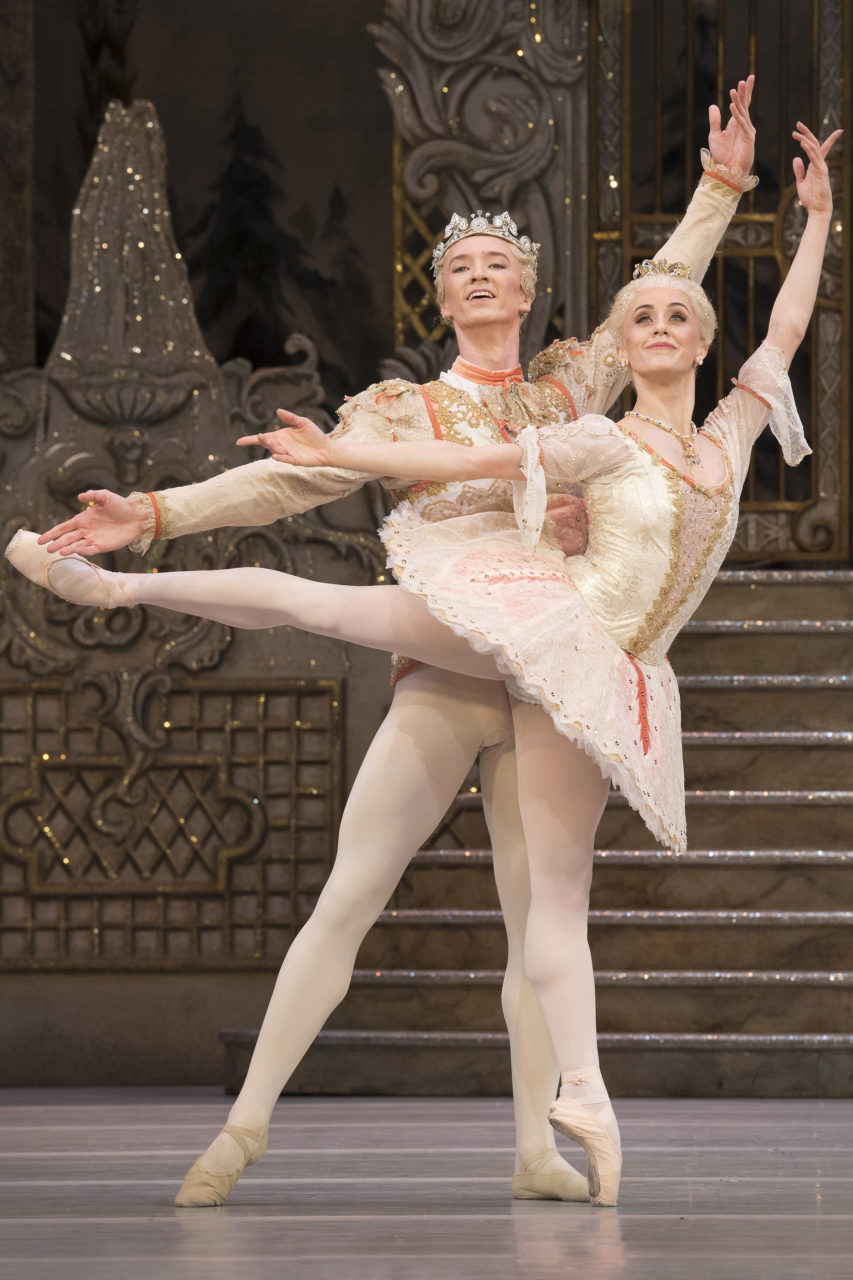
You might have not been convinced by my review to go watch The Nutcracker, but I would certainly say you would be doing a disservice to yourself for not giving yourself the chance to experience one of the most beautiful and immersive experiences conceived by humans at a time when it has never been more accessible or more needed!
The Nutcracker plays at the Royal Opera House until the 8th of January. Performances can also be watched through the Cinema Screening program at a cinema near your house.
Post Script:
Needless to say, what I have talked about here is just a small part of an incredible repertory of ballet that covers the widest range of human experience and emotions. I must also commend the efforts of the Royal Opera House to make ballet and opera more inclusive and accessible through the little touches. First of which is showcased in the interior of the building itself, with wide open spaces and little exhibits that invite the audience to learn more about the art forms. In addition to that, the programs offered are incredibly well written and help demystify the intricacies of the performance one is about to see. This is also coupled with YouTube videos that explain and showcase the ideas and thoughts that go into putting a performance together. The ticket prices have also become very accessible for college students, thanks to the Young ROH tickets. These offer massively discounted tickets for some of the best seats in the house (£25 or lower for almost any seat for certain performances!).
